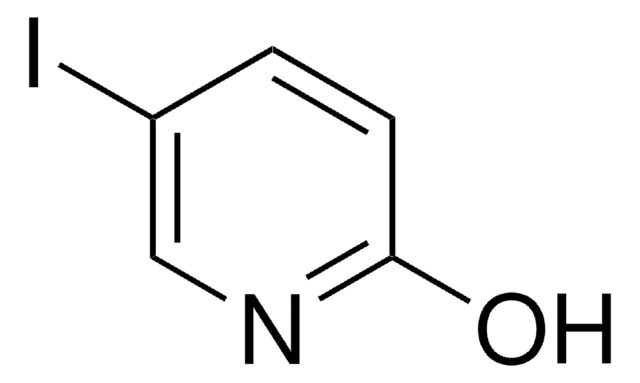All Photos(1)
About This Item
Empirical Formula (Hill Notation):
C6H7NO2
CAS Number:
Molecular Weight:
125.13
EC Number:
MDL number:
UNSPSC Code:
12352100
PubChem Substance ID:
NACRES:
NA.22
Recommended Products
assay
97%
form
solid
mp
115-117 °C (lit.)
SMILES string
COC1=CC=CNC1=O
InChI
1S/C6H7NO2/c1-9-5-3-2-4-7-6(5)8/h2-4H,1H3,(H,7,8)
InChI key
LKIMDXQLHFCXQF-UHFFFAOYSA-N
Application
3-Methoxy-2(1H)-pyridone was used in synthesis of azabenzoisocoumarins by double ipso substitutions. It was used as the starting reagent during the total synthesis of cepabactin.
signalword
Warning
hcodes
Hazard Classifications
Acute Tox. 4 Oral - Eye Irrit. 2 - Skin Irrit. 2 - STOT SE 3
target_organs
Respiratory system
Storage Class
11 - Combustible Solids
wgk_germany
WGK 3
flash_point_f
Not applicable
flash_point_c
Not applicable
ppe
dust mask type N95 (US), Eyeshields, Gloves
Certificates of Analysis (COA)
Search for Certificates of Analysis (COA) by entering the products Lot/Batch Number. Lot and Batch Numbers can be found on a product’s label following the words ‘Lot’ or ‘Batch’.
Already Own This Product?
Find documentation for the products that you have recently purchased in the Document Library.
Cédric Klumpp et al.
Bioorganic & medicinal chemistry letters, 15(6), 1721-1724 (2005-03-05)
A novel and straightforward total synthesis of cepabactin and its iron (III) complex is described. The latter compound was compared and identified to that obtained from the cultures of Burkholderia cepacia. On treatment of the growth medium of two different
Free radical reactions for heterocycle synthesis. Part 6: 2-Bromobenzoic acids as building blocks in the construction of nitrogen heterocycles.
Zhang W and Pugh G.
Tetrahedron, 59(17), 3009-3018 (2003)
Jonita Stankevičiūtė et al.
Scientific reports, 6, 39129-39129 (2016-12-17)
Pyridinols and pyridinamines are important intermediates with many applications in chemical industry. The pyridine derivatives are in great demand as synthons for pharmaceutical products. Moreover, pyridines are used either as biologically active substances or as building blocks for polymers with
Our team of scientists has experience in all areas of research including Life Science, Material Science, Chemical Synthesis, Chromatography, Analytical and many others.
Contact Technical Service









